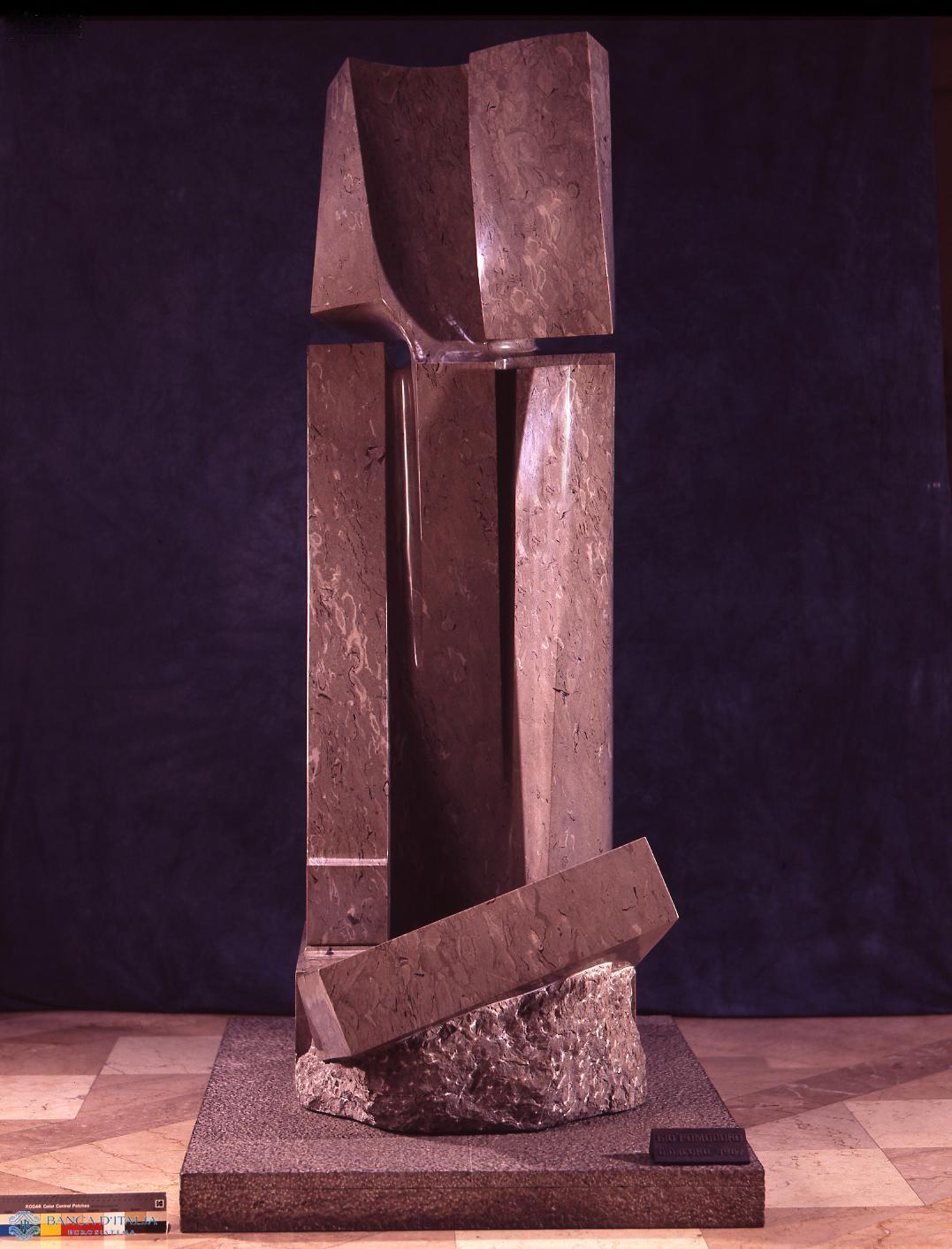Lacking the artist’s own direct interpretation, it is always arduous to decipher the messages that the sculptor entrusts to his titles and to the compact but articulated presences of his works. Giò Pomodoro is a politically engaged artist, a refined, cultured intellectual. His sculptures always refer to facts, experiences, figures that have affected his life and his meditations on form. These two Dioscuri, Castor and Pollux, executed in 1989 in calcareous stone, are similar in structure though different in height. They exploit years of formal experimentation on the theme of beauty as a measure sought within a plastic complex. The vital, formative energies of the organisms are framed within the rational knowledge of the forms and with respect for the material. Starting in the 1970s Pomodoro discovered that sculpture means digging into stone, marble, a hard, difficult material, and that this craft entailed considerable hard physical work. He also discovered that direct dialogue with the material is indispensable. He thus initiated the long artistic journey through which, at the end of the 1980s, with Archi, Soli produttori, and Contatti Antagonisti, he explored the profound value of symmetry and the capture of the void. Now he knows that every motion in space has an equal and opposite movement. Here the two heavenly twins, vertical in structure, are symmetrically “antagonistic” organisms. One is a parallelepiped with curved and convex parts grafted onto a void carved into the fullness of the pillar. The other is more than twice as tall, an organism divided into two distinct parts. The lower part is a rigid pillar opened in the centre by a hole drilled right through to the base. The upper part has a slightly curved mass at the centre of which, from a shadow hole, there opens out a deep, sharp cut that continues in the long, underlying central slash. The two sculptures thus embody the concepts of antagonism and symmetry.
Giò Pomodoro, Dioscuro A
Dioscuro A
Sculpture
20th century AD
Abstract
Artist
Date
1989
Material and technique
Calcareous stone
Measurements
234 x 73 x 125 cm
Compiler
Augusta Monferini

